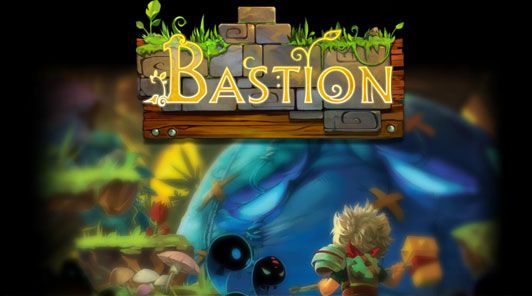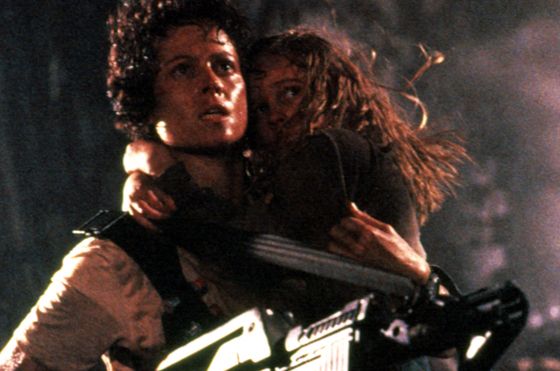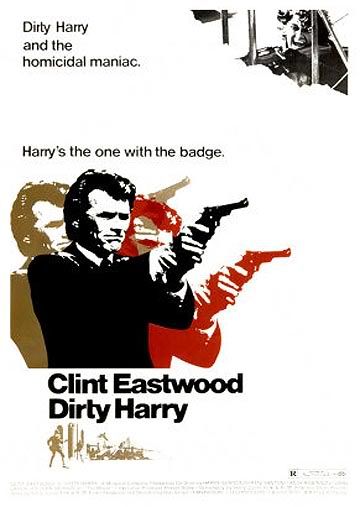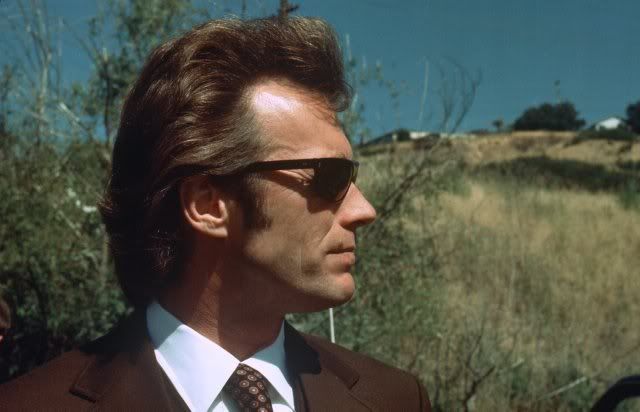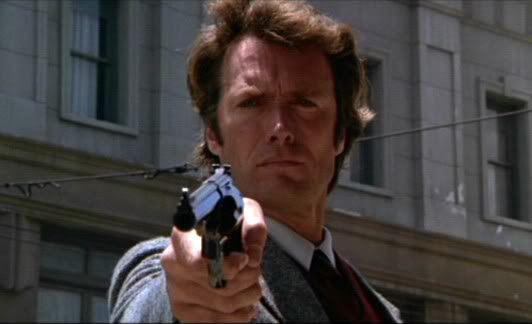My feelings on Christopher Nolan are well documented. I’ve gone in depth as to why the writer & director has earned my trust. Even his arguably weakest film to date, The Prestige, is interesting to me and overall a good film, even if it’s not quite up to the level of Inception or The Dark Knight. And as he closes his trilogy on Batman, Bruce Wayne, Gotham City, and the nature of heroism in the face of cynicism and despair, the question must be asked: is Nolan still worthy of my trust, and that of film-goers around the world?
Pretty much, yeah. The Dark Knight Rises is good. But before I talk about all the things it is, let me begin by telling you what it is not.
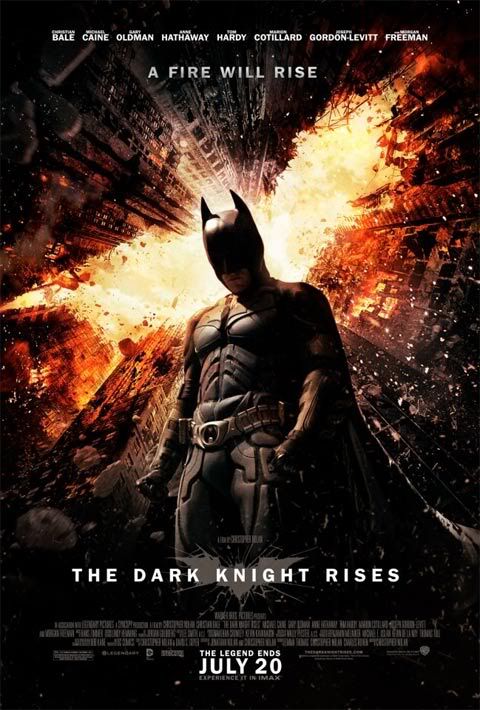
The Dark Knight Rises is not an immediate sequel to The Dark Knight. Eight years have passed, in fact, since the Joker’s reign of terror and the death of Harvey Dent. Batman’s act of taking the blame for Two-Face’s rampage has given the police unprecedented power, brutally cracking down on organized crime, throwing even the lowest mob peons into Blackgate Prison without bail or parole, and taking a massive psychological toll on Commissioner Gordon. Bruce Wayne, either the victim of an accident or beginning to succumb to the beatings he has dished out and taken as Batman, has become both reclusive and eccentric. He hasn’t completely lost his chops, though, as he catches a lithe and coy cat burglar making off with his mother’s pearls. And bearing down on the city is Bane, a mercenary with a peculiar speech pattern, utterly brutal methods, and a connection to the League of Shadows, the very organization bent on absolute justice that gave birth to Batman, who then destroyed it, or so he thought. We are told very little about the missing years, and shown even less, but the pieces are indeed in place for a massive endgame for Gotham City, and for Bruce himself.
The Dark Knight Rises is not without plot holes in general. In fact, the structure of the story seems a bit sloppy overall. I don’t mean that facts are missing and the audience is unable to put the pieces together. The story does work and has compelling, touching, and powerful moments. It’s simply assembled in an extremely odd way. The pace feels off at times, characters are explained to us rather than demonstrative in their actions, and as much as I can appreciate dichotomy in storytelling for emphasis and dramatic effect, there were times when the juxtaposition felt mishandled. No character exemplifies these problems more than Bane.
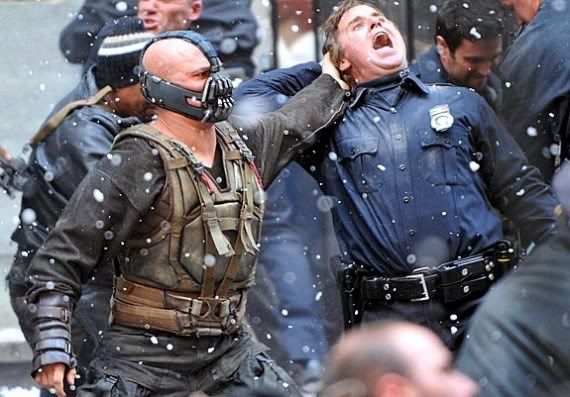
“You are in a lot of trouble, young man. To the principal’s office, let’s go.”
I don’t have a problem with Tom Hardy. I think he (and every other actor involved) did an excellent job. Nor do I have a problem with this iteration of the cerebral powerhouse that breaks the Batman (spoiler alert). I think that removing magical chemicals that make him a big slab of meat is a good move. The problem is that too much emphasis is placed on his ideology and personality and not enough is invested in making him truly intimidating. His malevolence, while keenly felt, is not motivated realistically. He is a monolithic sort of evil, Darth Vader without any of the pathos, and the film suffers for this. It’s not enough to cripple the film, not by a long shot, but it does cause things to limp here and there. The film is most certainly not perfect and, at times, not even all that smooth.
But it also is not a failure. The Dark Knight Rises does succeed in every single way it needs to succeed. It wraps up dangling plot threads from the other two movies. It allows long-standing characters like Commissioner Gordon and Alfred to have truly powerful moments, and also highlights the talents of newcomers John Blake and Selena Kyle. While we’re on the subject, Anne Hathaway was a perfect choice to play Selena. She completely inhabits the cat-like nature of the character, from a fickle streak to a truly independent spirit to loyalty and affection that are given on her own terms. It’s a shame we’ll only see her in this one film! Batman gets new toys, and while he isn’t seen as much as Batman in this film as in The Dark Knight, his presence is felt, just as much as Bane’s is.

The fact that she looks as good as she does is definitely the icing, rather than the cake.
I don’t think The Dark Knight Rises is the best film of Christopher Nolan’s career so far. It certainly isn’t the best one of his Batman trilogy. What it is, however, is very good, quite enjoyable, and an excellent way to bring the trilogy to an end. As much as the disjointed nature of the first act and some unnecessary repetition of themes and motivations don’t help the pacing problems of the story, the connections to the stronger films and the gaining momentum towards the climax of not just this film, but the Dark Knight story overall, carries us through to a satisfying end. I think the three films, as a whole, will stand up for years to come, even if this final entry into the trilogy limps or muffles a line here and there.
Stuff I Liked: John Blake is a great addition to the cast. The systematic way in which Wayne is both broken down and driven into his initial confrontation with Bane. Alfred staying true to his convictions, Lucius Fox cracking wise, and Gordon never giving up. The Pittsburgh location & elements. And do you suppose Nolan called up Aaron Eckhart and got permission to keep using his face?
Stuff I Didn’t Like: Don’t tell me what motivates our heroes, our villains, and the people caught in between, show me. The Batvoice. A couple of Bane’s lines were very difficult to follow completely; even if you can discern the gist, you miss out on a detail or two. The pace of the first hour or so feels very much off. There are undeniable plot holes.
Stuff I Loved: Cillian Murphy’s cameo. Wayne Manor and the new Batcave. Hans Zimmer’s score. Great shot construction and action sequences. The Bat. The dichotomy of Bane’s erudite voice and polite mannerisms with his brutal hand-to-hand skills and intimidating form. The last fifteen minutes. Everything – absolutely everything – about Anne Hathaway’s Selena Kyle.
Bottom Line: This is not Nolan’s best work. But Nolan’s work is always of such quality, such vision, and such passion that it’s hard not to appreciate it as simply good film-making even when it’s not blowing your mind. Because of the technical genius at work, the overall power of the performers, the spectacle of this tale’s climax, and the ways in which this trilogy is drawn to a close, I unreservedly recommend you go and see The Dark Knight Rises.

